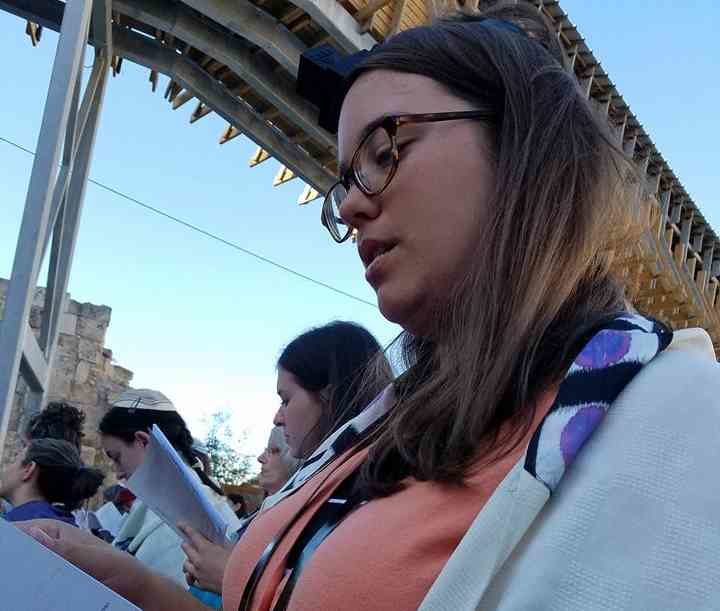
Rabbi Larry Milder of Beth Emek in Pleasanton addressed this question in an email to his members. I like his very through answer and I’m sharing it with you here.
Tallit in the Morning
You walk into the synagogue for services and see a basket of tallitot, prayer shawls. Do you pick one up?
It is a mitzvah, a sacred obligation, for a Jew to wear a tallit when one prays. That obligation, however, does not apply to all services. It is specific to morning services.
It is an understandable confusion. After all, the tallitot are there all the time. And many Jews remember wearing a tallit at services. They just might not remember which services.
The commandment in Numbers (15:37-41) says, regarding the tzitzit, the fringes, “you shall see it, and recall all the commandments.” The rabbis interpret this to mean that the obligation applies to daytime, but not to nighttime.
Morning services are when we wear a tallit. The obligation is to see the fringes, and remember the commandments.
It is not entirely clear how looking at the tzitzit will cause one to remember the commandments. This is one of those obligations that you would not arrive at through the exercise of reason.
Traditionally, the tzitzit are knotted in such a way as to add up to the number 613; that is, if you count the strings and the knots and add them to the numerical value of the word “tzitzit.” It’s an exercise in Gematria, Jewish numerology.
The idea is that all 613 mitzvot contained in the Torah can be symbolically represented by the tzitzit. When we look at the tzitzit, it reminds us to live Jewishly meaningful lives.
Perhaps this reminder is all the more important in the morning, when the full day lies ahead of us.
A tallit is not worn at afternoon or evening services. Of course, there are exceptions. On the evening of Yom Kippur, one wears a tallit. In some congregations, the Sh’liach Tzibbur, the prayer leader, wears a tallit. And while it is obligatory to wear a tallit when called to the Torah, there is an assumption that one is already wearing a tallit, as Torah is traditionally read at morning services.
The obligation to wear a tallit begins when a Jew turns 13. It is not a sign of having a Bar/Bat Mitzvah “ceremony”, as the custom of celebrating one’s status as a Bar/Bat Mitzvah is not itself a mitzvah. Once one turns 13, one is obligated by the mitzvot, and hence, one wears a tallit, as a reminder of one’s sacred obligations and as an expression of being an adult Jew.
Ultimately, though, wearing a tallit is a spiritual act. It connects us to God in a way that is neither rational nor utilitarian. It is a simple act of holiness, turning the ordinary moment and surroundings into a time and place of relationship with the divine. The Midrash interprets the commandment as if it has a hidden meaning. As opposed to telling us, “You shall see them, (the fringes),” it speaks in the singular: “You shall see it/Him.” When we wear the tallit, we go beyond simply counting the mitzvot, to a vision of the Divine Source from which all of our obligations emanate.